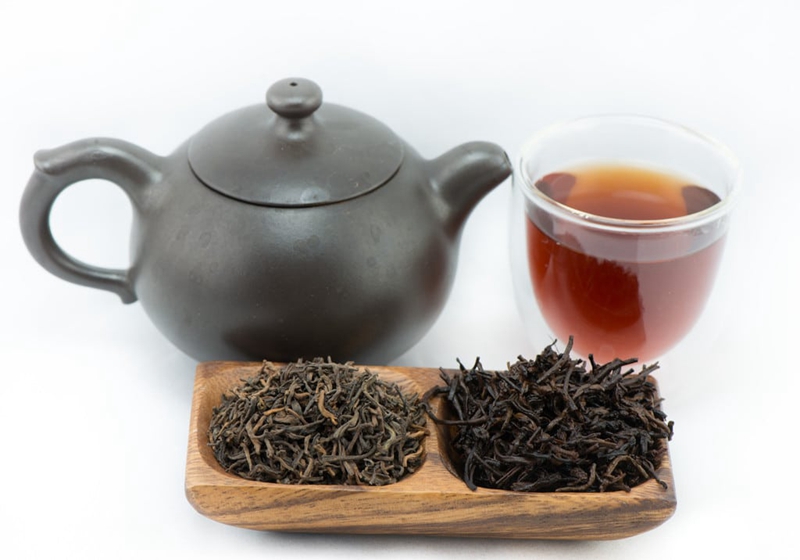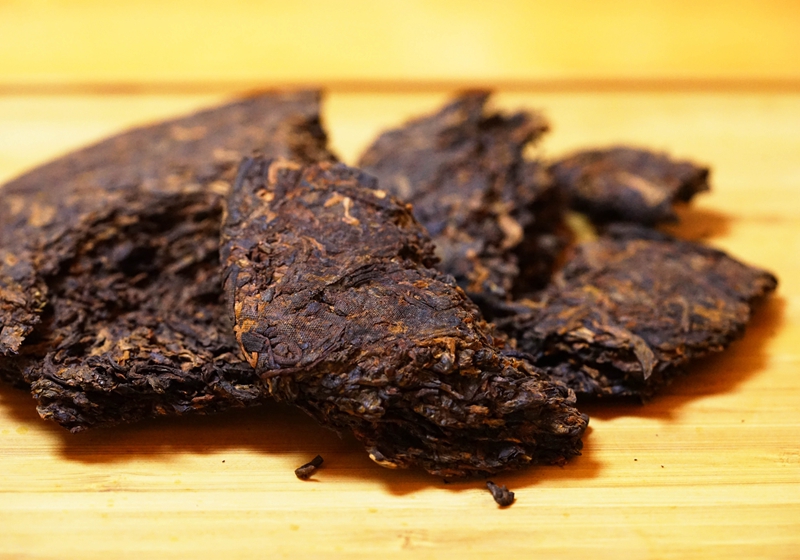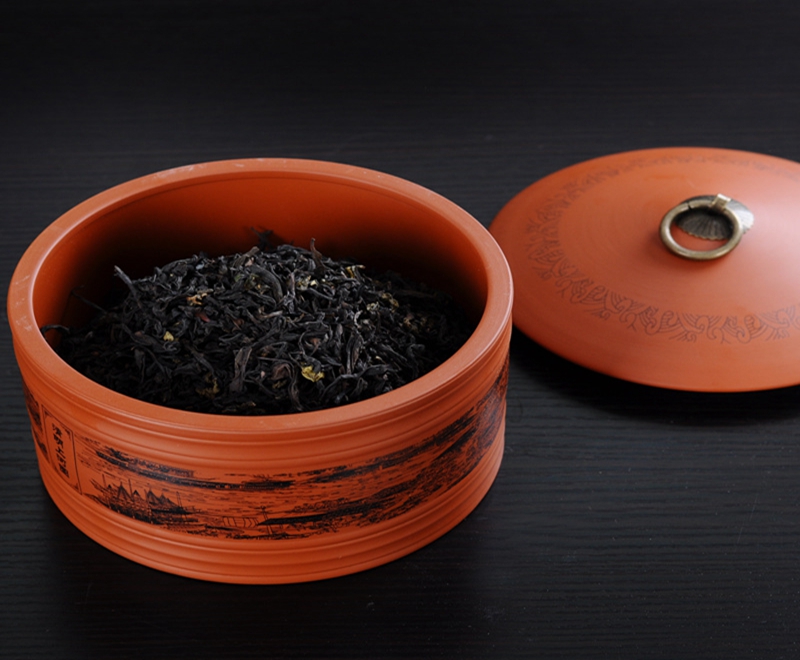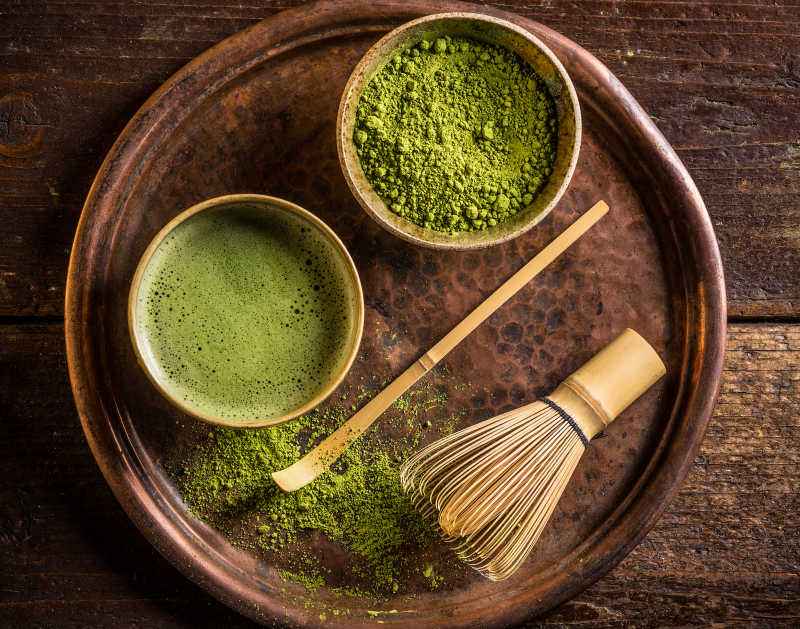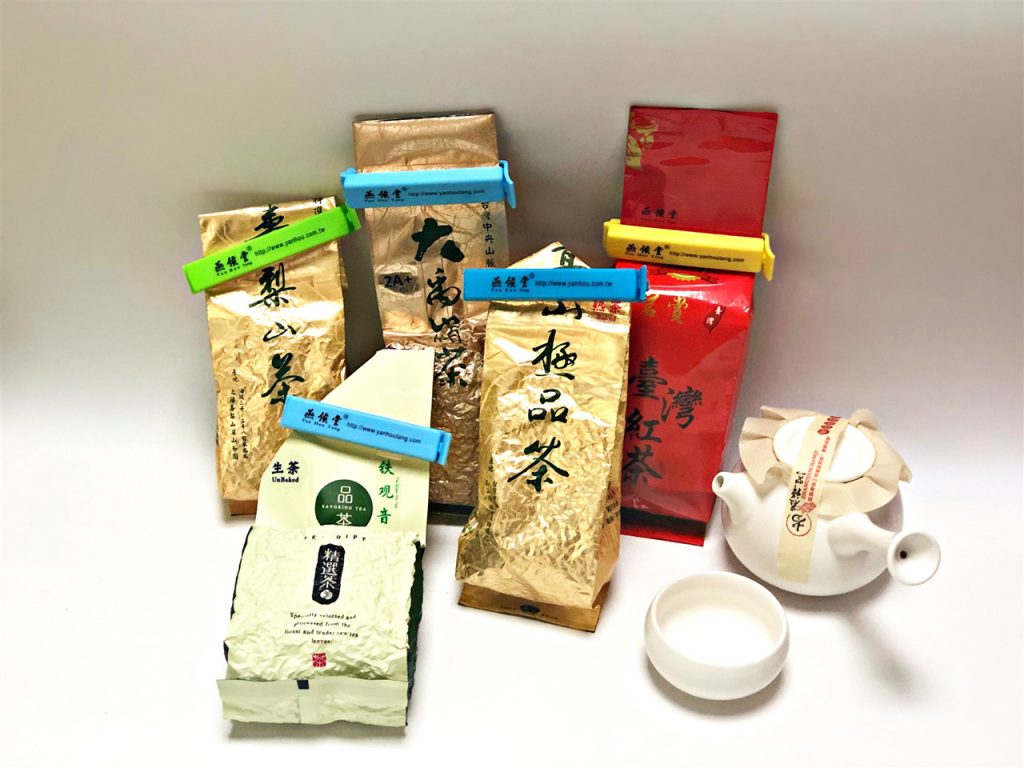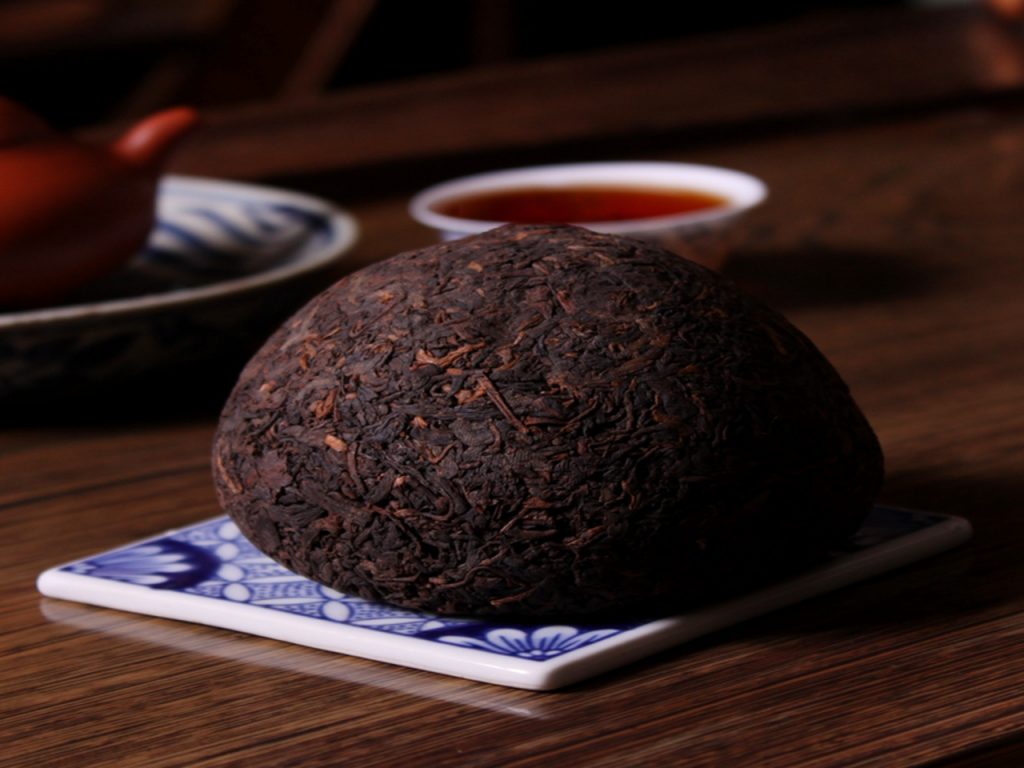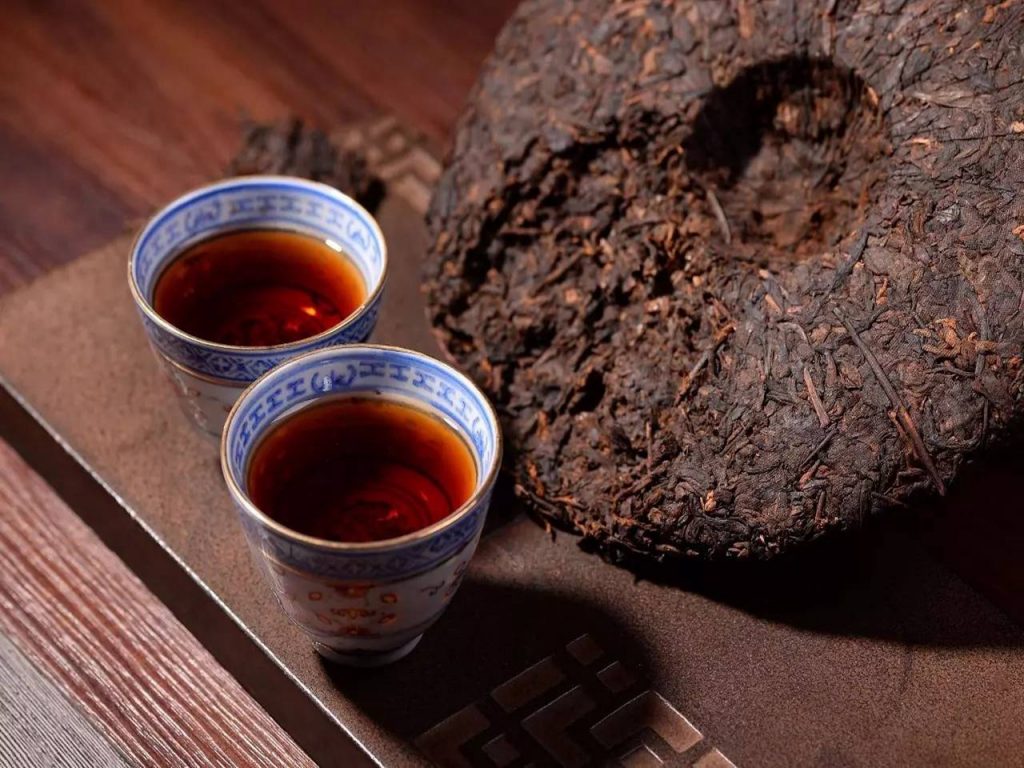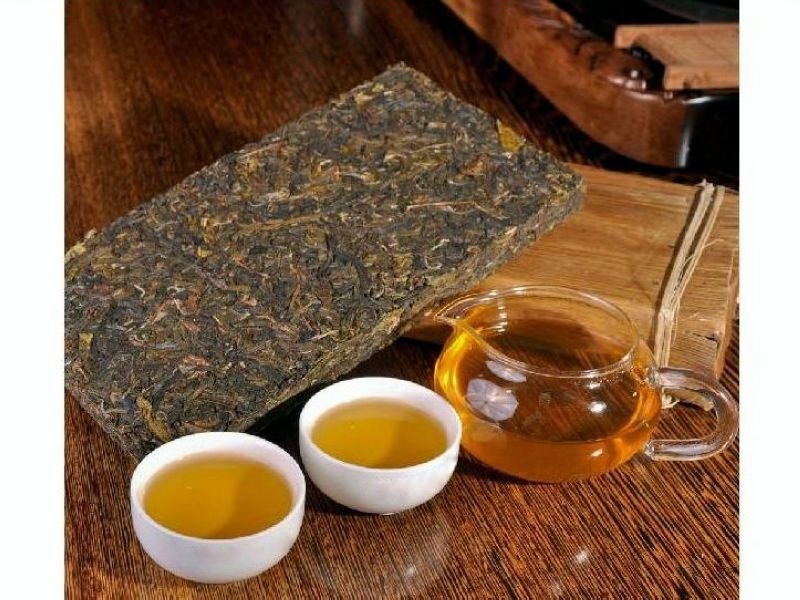What is the difference of Pu-Erh young and aged tea
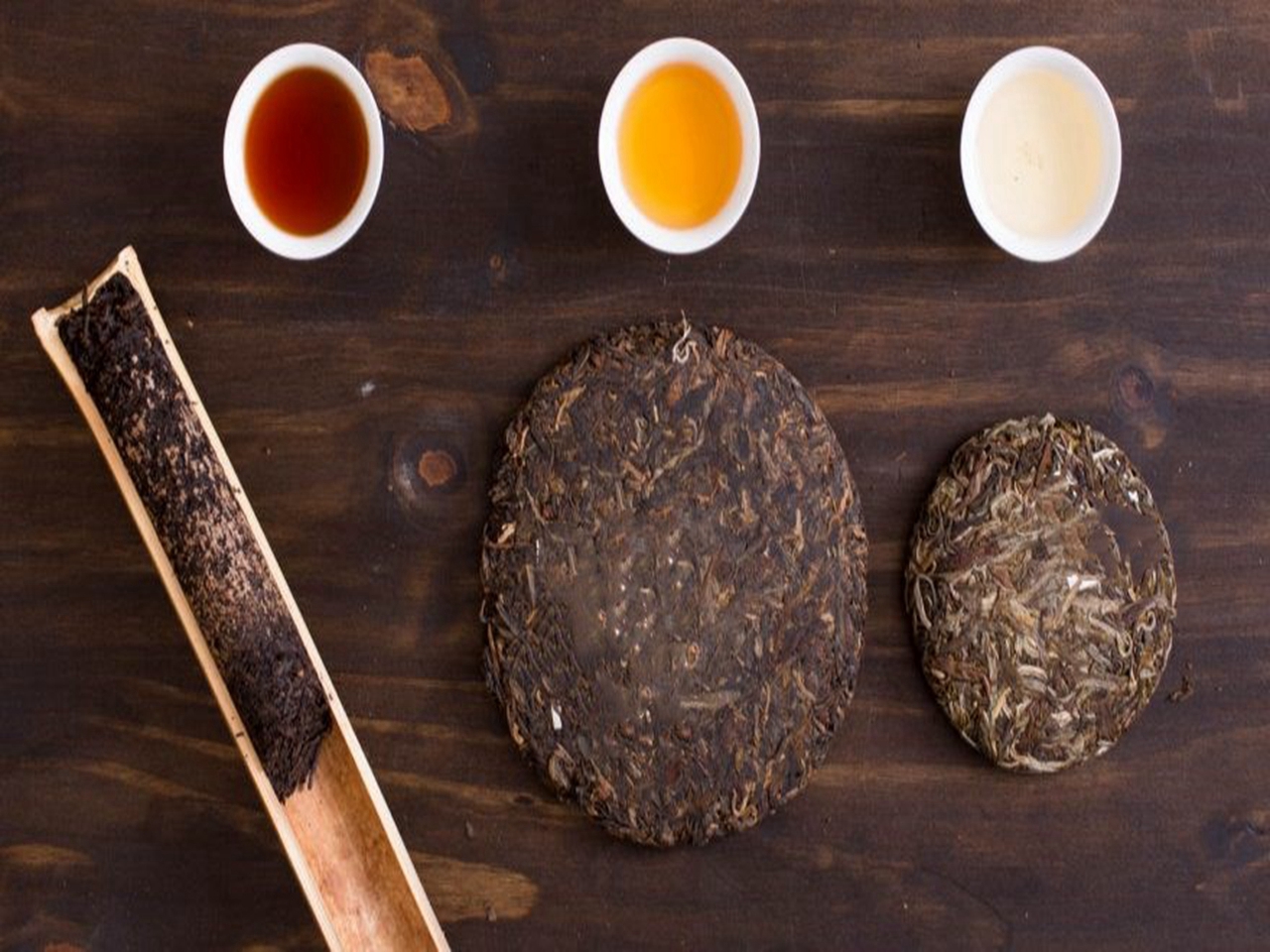
Pu-Erh tea can divide into raw tea and (ripe) aged tea rely on whether fermented. Different crafts also giving them differences in appearance, taste, and fragrance. Infusion color is illustrative of the fact that a sheng cha puer and a real puer are two different kinds of teas.
what is a raw ‘ young ‘puer >>>
Puer ( formally Pu’er, Chinese: 普洱 ) teas that have not undergone post-fermentation are sometimes labeled as “raw” puer.
“Raw puer” is a transliteration of the Chinese expression “sheng-cha” ( 生茶 ). As an adjective, the word “sheng” means not cooked, not ripened, or alive. The expression “sheng cha” initially refers to the dried tea leaves of the puer variety. So it meants to go through further processing, such as steaming for compressing or post-fermentation for darkening.
The plucks are laid under the sun for an extensive amount of sun-wilting. While in some productions the leaves are taken through heated air at around 35~38°C. Some are still naturally air dry in the bamboo baskets for a few days, particularly those that are from indigenous “wild” tea trees, and thus the pricier ones.
Oxidation takes place throughout the process, but unlike that in black tea production, where the leaf tissue structures are broken for rapid oxidation. Oxidation in both maocha puer and white tea are slow, slight and yet overall in the leaf.
what is a cooked Pu-Erh ‘ aged ‘ tea >>>
We often use raw Pu-Erh as the material to make aged puerh. Piled and soak raw Pu-Erh tea with moisture in order to initiate the fermentation of bacteria. In this stage, bacteria such as actinomycetes involve in fermentation. After this stage, tea is spread over on the floor in order to reduce moisture and initiate the secondary fermentation which takes place by yeast and mold. The entire fermentation process of ripe pu-erh tea takes around two months.
Three ways of waking Puerh tea cake >>>
1. Dry waking: Break up a cake or brick and spread out the leaves for them to be fully aired for a few days. (Cover the leaves with some tissues if necessary.) Stored the tea leaves in an unglazed clay canister where the leaves can breathe through the microcavities in the wall for about 1-3 months. This is the most gentle waking process. It allows the teas to wake up in its natural pace to release its aged aroma and mellow taste.
2. Men-Xiang (闷香 Sealed aroma waking): Warm up a Zi-Sha teapot with hot water, empty the teapot and put the leaves in the teapot for about 1 minute before brewing.
3. Wen-Run (温润 warm and wet method) Add tea leaves to a Zi Sha teapot or Gai-Wan, pour about 60oC warm water to the leaves from the edge to the center and drain the water immediately before brewing. This is the most abrupt, but the quickest waking method to bring the tea leaves to the awake state, most suitable for well-aged teas or teas made of predominately mature leaves.
Preserve and Store Puerh tea cake >>>
1.Drink the Pu-Erh tea right away
Break the raw or aged tea into small pieces. And place in a paper bag in an open area with lots of air circulation.
2. Let the tea age for a while and then drink
Break the tea into small pieces, place in a paper bag. Then store in a cardboard box or unglazed clay jar.
3. Keep the tea for long term storage
Keep the raw or aged tea in its original shape and store in plastic wrap poked with a few holes. Like a clay, glass or metal jar or in the original paper wrapping in a cardboard box. Each approach affects tea differently and if you remember to open your container at least once a year to allow some fresh air in, this will allow your micro-organisms to continue their work, albeit more slowly.

